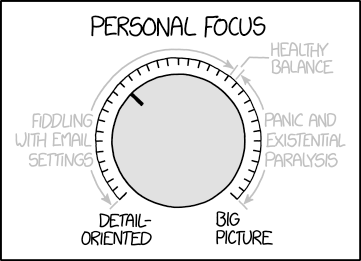In undergrad when I learned about the field of
operations research I assumed people would write down their objective and
constraints, get the optimal solution, and then do whatever the model told them
to. Eventually I took a class from an adjunct professor my first year of grad
school who explained that the hardest part of working in OR was convincing
people to implement the output of the model. Basically "decision
makers" (aka, people who did not know math) would not believe the output
of the model, and so we had to design things so they could follow all the steps
in our analysis.
I internalized that people would have reasons
not to believe the model, but for a long time continued to believe it was
mostly because of mistakes people made. You would build them a beautiful model,
and then they would see the solution and realize that they forgot to give you
important constraints. Or they would see the result and just determine it too
weird and insist on a sub-optimal solution which looked more like what they had
been doing. Over time I developed a more complete list of why people would not
trust a model, but I still fundamentally thought of the models as right.
At some point though, that changed. I stopped
thinking of people as the problem. I started this blog under the premise that not
solving the right problem (type 3 error) was avoidable, but took a careful study
to get to the problem you should solve. Even now, I have continued to find it
challenging to really talk about that mental shift. In fact, this particular blog
post has been sitting in purgatory since July while I was figuring out just the
right way to convey the distinction.
But yesterday, while reading the HBR article “Are
you solving the right problems?” the author described reframing a problem as not
simply redefining the “real” problem, but instead recognizing that there is a better
problem to solve. Realizing that you could
be solving a better problem is not a simple process. It often requires
attempting to solve other problems first. Even the notion of a “better” problem
is not straightforward. It may have to do with the intractability of your current
problem, or the realization that your first solution does not achieve what you
thought it would.
If you are reading this and have a problem that
could use some reframing, feel free to reach out to me or leave a comment
here. Oftentimes, just explaining the situation to someone a bit further from
the problem is all it takes to shift your context.
